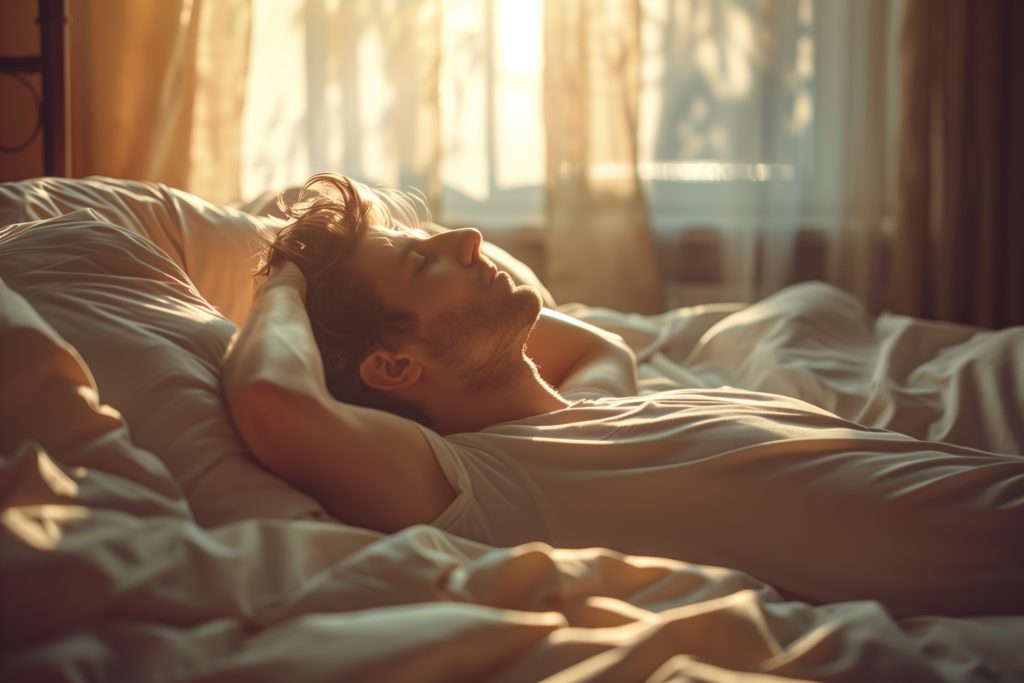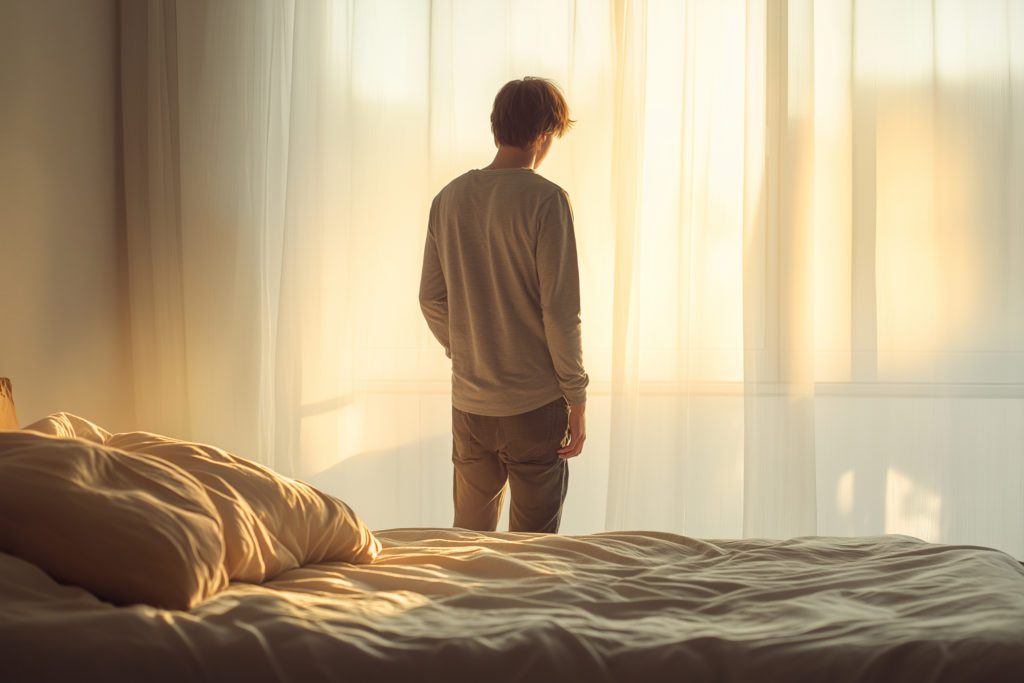
Best Sleep Positions to Avoid Sleep Apnea
It's time to find out the best sleep positions to avoid sleep apnea. Side sleeping, proper posture, and simple tips can improve breathing and boost sleep quality!

Sleep apnea, a condition in which breathing repeatedly stops and starts during sleep, can leave you feeling exhausted when you wake up. But here’s the good news: your sleep position might hold the key to relief.
Research suggests that how you sleep can directly impact the severity of sleep apnea. For instance, sleeping on your back is as bad for sleep apnea as late-night caffeine is for an early bedtime. On the other hand, certain positions can reduce airway obstructions and improve sleep quality.
In this article, we’ll discuss the best sleep positions to avoid sleep apnea and how to adopt them. Whether you’re a side sleeper, back sleeper, or somewhere in between, we’ve got tips and science-backed strategies to help you sleep comfortably.
The Basics of Sleep Apnea
Sleep apnea isn’t just about loud snoring. It’s a serious condition with real health implications. Obstructive sleep apnea (OSA), the most common type, occurs when throat muscles relax too much during sleep, narrowing the airway. Central sleep apnea (CSA), less common, is when the brain stops sending breathing signals to the lungs.
Anatomy plays a significant role—narrow airways, oversized tonsils, or a falling tongue can obstruct the airways. However, lifestyle factors like obesity, smoking, and even aging can contribute.
Interestingly, gravity also adds to the problem. When you sleep on your back, gravity pulls tissues downward, making the airway more likely to collapse. This is why body position is such a critical factor in managing OSA.
So, while sleep apnea might sound challenging, small changes—like adjusting your sleep posture—can make a big difference.
The Role of Sleep Positions in Managing Sleep Apnea
Ever wonder why some people can sleep peacefully through the apocalypse while others wake up gasping for air? Turns out, sleep position plays a huge role in this. Lying on your back pushes your tongue and soft tissues backward, blocking the airway and worsening sleep apnea symptoms.
On the flip side, side sleeping helps keep the airway open. A 2019 study in the Cochrane Database of Systematic Reviews showed that individuals with OSA experienced significantly fewer breathing interruptions when sleeping on their sides compared to their backs.
The authors even suggested that “positional therapy” (training yourself to sleep in certain positions) could be a simple and effective treatment. Even stomach sleeping, though less common, can sometimes help. It forces the airway to stay open.
Best Sleep Positions to Avoid Sleep Apnea
When it comes to managing sleep apnea, not all sleep positions are equal. Here’s the lowdown on the best sleep positions to avoid sleep apnea.
Side Sleeping
If sleep positions were ranked, side sleeping would take the crown. It’s the most effective position for reducing airway blockages. A study published in the Journal of Personalized Medicine found that side sleeping reduced the number of apnea episodes in participants. This is because gravity works in your favor, keeping your tongue and soft tissues from collapsing into the airway.
And if you’re wondering, left-side sleeping might even outperform right-side sleeping. Research suggests it can reduce acid reflux, which can indirectly benefit sleep apnea sufferers.
Stomach Sleeping
While not as popular, stomach sleeping can also reduce sleep apnea symptoms. It prevents the tongue from blocking the airway, which is great news. The downside? It might put a little strain on your muscles and backbone. Stomach sleeping can also strain your neck and back, so it’s a bit of a trade-off.
Elevated Back Sleeping
If you can’t avoid the habit of sleeping on your back, there’s a middle ground. Sleeping with your upper body elevated—using an adjustable bed or a wedge pillow—can minimize the effects of gravity on the airway. A 2022 study highlighted that elevating the head reduced apnea severity in some back sleepers.
Sleep Positions to Avoid
Let's talk about the positions you should probably avoid if you're aiming for a perfect night's sleep.
Back Sleeping (Supine Position)
As we have discussed multiple times before, sleeping on your back is the ultimate culprit when it comes to worsening sleep apnea. In fact, people with positional obstructive sleep apnea (POSA) experience up to twice as many breathing interruptions on their backs compared to their sides.
The solution? Positional therapy tools, such as wedge pillows or even special shirts, discourage back sleeping.
Wedge pillows are triangular-shaped cushions. They elevate the upper body or reposition it to reduce airway obstruction, which ultimately promotes better breathing during sleep. Similarly, special shirts are equipped with padded sections or small attachments on the back. These attachments make it uncomfortable to lie flat and encourage the person to sleep on their side.
The Unstable Sleeper
Frequent position shifters might also struggle to manage sleep apnea. Rapidly switching from side to back or stomach to back throughout the night can undo the benefits of sleeping in a better position. Finding a stable posture and sticking with it can make all the difference.
Tips to Transition to Better Sleep Positions
Changing how you sleep might sound difficult, but it doesn't have to be. Here are some simple strategies to help you transition to the best sleep positions to avoid sleep apnea.
Start with Pillows
A strategically placed pillow can work wonders. Want to stay on your side? Hug a body pillow or place one behind your back to keep you from rolling over. There are even wedge-shaped pillows designed to elevate your upper body if you're a back sleeper trying to minimize symptoms.
Train Your Body
Believe it or not, you can train yourself to sleep in a specific position. Positional therapy devices—like sleep belts with built-in foam—gently nudge you to stay on your side without making you feel uncomfortable.
Lifestyle Tweaks
Sometimes, the simplest fixes are the most effective. Losing weight, avoiding alcohol close to bedtime, and sticking to a consistent sleep schedule can also enhance your ability to maintain a healthier sleep position.
Use technology
Pillow allows you to track your sleep and spot any unusual trends. It can easily track changes in snoring, blood oxygen levels, or respiratory rates. By analyzing this data, you can gain insights into your sleep patterns and make adjustments to improve your overall sleep quality.
The Final Call
Side sleeping is the best sleep position, and it offers a simple and effective way to keep your airway open and your breathing steady. Remember, change takes time, so start small. Whether it's adjusting your posture with pillows, using sleep trackers for feedback, or just being mindful of how you sleep, every step counts.
FAQ
How can side sleepers maintain their position throughout the night?
Using a body pillow or a wedge pillow can help side sleepers stay in position. Positional therapy devices, like belts or shirts designed to discourage back sleeping, can also be effective.
Is it safe for pregnant individuals with sleep apnea to use positional therapy?
Yes, positional therapy is particularly beneficial during pregnancy, as sleeping on the left side improves blood flow and can help manage sleep apnea symptoms without medication.
Can frequent position changes during sleep worsen sleep apnea symptoms?
Yes, shifting from beneficial positions like side sleeping to back sleeping can negate the improvements in breathing. Stable sleeping patterns are crucial for managing symptoms.
Can mouth taping or nasal strips complement positional therapy for sleep apnea?
Yes, these tools can support better airflow by encouraging nasal breathing and preventing mouth breathing, which often exacerbates sleep apnea symptoms, especially in back sleepers.
Can adjustable beds completely replace the need for positional therapy?
While adjustable beds can help by elevating the upper body, they are most effective when combined with other positional strategies like side sleeping.
What are some common myths about sleep positions and sleep apnea?
A common myth is that stomach sleeping is always bad for you. While it can strain the neck and back, it might help some people with sleep apnea by keeping the airway open.

Written by
Dr Aqsa
As a Medical Doctor, Dr Aqsa, uses her knowledge to craft complex medical information that is understandable to the general public. For years, she has tried to improve health literacy and empower readers with valuable health knowledge through her articles, blog posts, and educational materials.
Download Pillow
Get help
Press & News
Legal
Connect
X (Twitter)
Company
Copyright © Neybox Digital Ltd.



